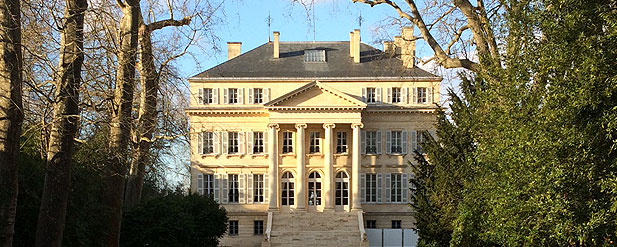
Bordeaux 2016: Northern Lights
15 February 2017
Journalists like to pigeonhole vintages. It supposedly makes life easy for consumers. Condense the wines of Bordeaux down into a brief soundbite, a paragraph that tells you all you need to know about this wonderful region.
Tom Jenkins
In 2015 it was a ‘Right Bank, Pessac and Margaux’ year. Read into this what you will – but what is not said often resonates the loudest. Most interpreted this as ‘don’t go near the northern Medoc’. The truth is rarely so simple…
Last week, our reconnaissance team spent three fascinating days tasting and re-tasting what is already being referred to as a sanctified trilogy: 2014, 2015 and 2016. Let’s start with the 2014s. This is a vintage that really appeals to our palates – a combination of modern winemaking and classic flavours, a vintage of balance and precision with more than enough power and concentration. It will of course remain in the shadow of 2015 and 2016, but these wines will make you smile and if you bought them en primeur, you should be well pleased.
2015 is indeed exceptional in Pomerol, Pessac and Margaux, and excels at times in St Emilion. Re-tasting some of the stars of the Medoc, we couldn’t help thinking that the ‘story’ may actually be the oversight of some Super Seconds. Commercially, many of these wines were derided. Pichon Baron often takes the wrap for a minor derailing of the campaign. Perception of price and value is one thing – the quality of the wines is quite another. The likes of Pichon Lalande, Ducru Beaucaillou and Leoville Las Cases have made spellbinding wines. These are lavishly perfumed, gloriously vivid and bursting with juicy Cabernet fruit; we found ourselves falling head over heels for them. In fact, St Julien is bursting with successes. One requires a bit more discernment in Pauillac, but again, there are plenty of ravishing wines to choose from.
Enjoyable as it was to affirm our views on these two fascinating vintages, the real excitement was discovering the 2016s. We should say now that we only tasted at a handful of estates – most were still finalising their blends – assemblage is a painstaking process as we again discovered when we blended our House Pomerol! Take a chateau like Cheval Blanc for example. They have 45 plots which are all vinified separately. Pierre-Olivier will taste each vat every day during fermentations and until blending. Deciding the components is an art-form that requires patience and skill. We were some of the first ‘foreigners’ to taste the magnificent Chateau Montrose 2016. Hervé Berland draws parallels to 2010, and it does indeed share a similar DNA: power, class, effortless concentration, yet retains a florality, freshness and poise, and all at about 13% alcohol. This is a vintage where you can have your cake and eat it! Cabernets have never tasted so pure or delicate, and tannins have never looked so refined, and this is with 16% of outrageously good press wine.
Tasting with Nicolas Glumineau at Pichon Lalande gave us a different perspective on the 2016s. The final blend has been assembled, but is slightly in shock, so we sampled the components. Again, depth of colour, astonishing aromatics, effortless sleek black fruit and regal tannins made every plot a pleasure to taste. We can only imagine how the sum of these impressive parts will look for now…
It may seem that all is a little too rosy; a vintage with volume and an abundance of class, but we should sound a word of caution. Nicolas Audebert, of Canon and Rauzan Segla, who produced two of the outstanding wines of 2015 explained some of the difficulties caused by the growing season, and particularly the extraordinary draught. Some terroirs, and young vines simply couldn’t cope. The hydric stress decimated certain patches, and when the rain did finally arrive in September, some grapes swelled and split causing a risk of rot. Carefully managed and using selection, this has no impact on the final wine. Rauzan Segla 2016 is a worthy successor to the splendid 2015. For those without the means, know-how or terroir, 2016 presented many adversities. How individual Chateaux have risen to the challenge will be fascinating to see.


